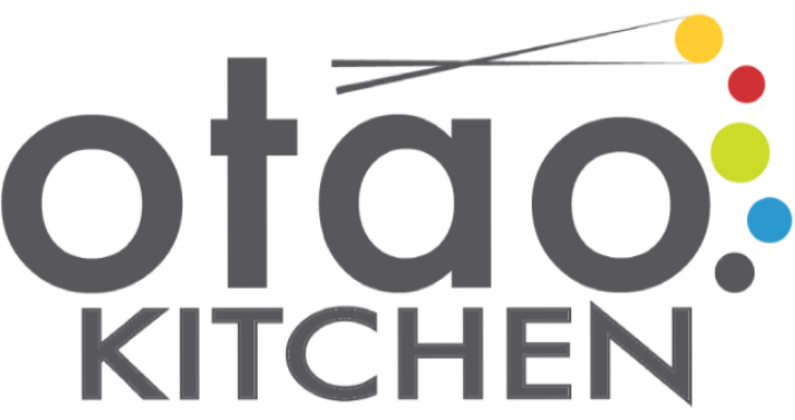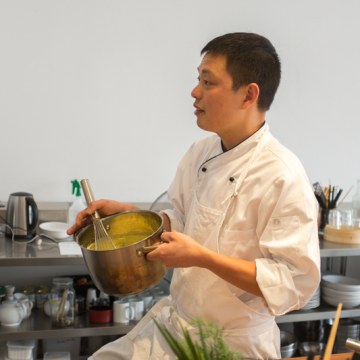1. Nutritional Yeast
Your dairy-free answer to parmesan. These golden flakes are rich in umami and B12, ideal for sprinkling over pasta, popcorn, or blending into creamy sauces. Try it in a vegan mac and cheese—you’ll never look back.
Try it in: Vegan carbonara, dairy-free dips, or savoury roasted vegetables.
2. Miso Paste
This fermented Japanese staple adds depth and richness to soups, dressings, and marinades. A teaspoon of miso turns a simple broth into something spectacular.
Pro tip: White miso is milder and perfect for dressings; red miso adds deep flavour to ramen.
3. Aquafaba
The brine from canned chickpeas might seem like waste—but it's a vegan miracle. Use it to whip up mousses, meringues, or bind a frittata. It’s the ultimate egg white substitute.
Use it in: Vegan mayo, brownies, or a fluffy pavlova.
4. Jackfruit
Green jackfruit (usually canned in brine) mimics pulled pork when shredded and spiced. It’s a hearty, satisfying option for tacos, burgers, and curries.
Top idea: Marinate with smoky BBQ sauce and serve in soft rolls.
5. Black Salt (Kala Namak)
This Indian salt has a sulphuric, eggy taste, making it ideal for tofu scrambles and vegan omelettes. A pinch adds that brunchy "egg" flavour.
Try it in: Vegan quiche, frittata, or chickpea flour pancakes.
6. Liquid Smoke
Missing the taste of BBQ? A few drops of liquid smoke infuse grilled, meaty richness into beans, lentils, or jackfruit.
Great for: Vegan bacon, smoky baked beans, or BBQ jackfruit sliders.
7. Coconut Aminos
A soy-free, gluten-free alternative to soy sauce, coconut aminos are slightly sweeter with lower sodium. Perfect for stir-fries and marinades.
Use it as: A dipping sauce or to season roasted vegetables.
8. Cashew Cream
Made from soaked cashews blended with water, this is your new dairy-free go-to for creamy pasta, soups, or desserts.
Make it magic: Blend with garlic and lemon for a vegan Alfredo, or sweeten with vanilla for a cheesecake base.
9. Textured Vegetable Protein (TVP)
This budget-friendly pantry staple mimics ground meat once rehydrated. It’s protein-packed and great for weeknight meals.
Use it in: Vegan Bolognese, chilli, or tacos.
10. Mushroom Powder
A sprinkle of mushroom powder adds earthy umami and savoury depth to any dish. It’s a natural flavour booster.
Perfect for: Soups, gravies, or homemade veggie burgers.
How to Use These Ingredients in Your Vegan Cooking
Let’s turn these pantry staples into standout meals:
Cheesy Pasta
Blend nutritional yeast with cashew cream for a rich, creamy sauce. Add a dash of mushroom powder to boost savoury depth.
Pulled Jackfruit Tacos
Sauté jackfruit with liquid smoke, coconut aminos, and spices for a BBQ-style filling. Serve with slaw and avocado.
Umami Soup
Stir miso paste and mushroom powder into veggie broth for a comforting ramen. Top with noodles, bok choy, and a sprinkle of nutritional yeast.
Egg-Free Breakfast
Add black salt to a tofu scramble for an eggy flavour. Use aquafaba to make a veggie-packed vegan frittata.
Quick Stir-Fry
Toss chopped vegetables and rehydrated TVP in coconut aminos and liquid smoke. Serve over rice or noodles.
Tips for Mastering Vegan Cooking as a Beginner
🔹 Start Small: Try one or two ingredients at a time. For example, sprinkle nutritional yeast over popcorn or add a teaspoon of miso to soup.
🔹 Layer Flavours: Combine ingredients like miso, mushroom powder, and cashew cream for depth, creaminess, and complexity.
🔹 Store Smart: Keep miso and cashew cream refrigerated. Store TVP, nutritional yeast, and mushroom powder in airtight containers.
🔹 Experiment Freely: Swap based on what’s available—tamari for coconut aminos, or almond butter instead of cashew cream. Play and explore.
Start Your Vegan Cooking Journey at Otao Kitchen
These ten secret ingredients will help you create dishes that are bold, nourishing, and never boring. But nothing beats learning hands-on.
Join our Vegan Cooking Class or part of our new Home Chef Program at Otao Kitchen in Melbourne and discover how to turn these ingredients into delicious, restaurant-quality meals. Whether you're plant-curious or fully committed, our expert chefs will guide you every step of the way.
















































